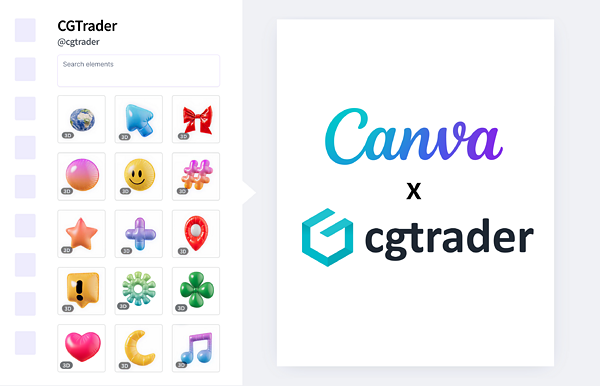The concept of the metaverse has gained significant attention in recent years, fueled by advancements in virtual and augmented reality technologies. The metaverse is a virtual space where users can interact with each other and digital objects in a three-dimensional environment. The creation of such virtual environments requires the use of digital assets, mainly 3D models that structure and decorate the digital worlds allowing creators to let their creativity run wild! 3D models have been the pillars of such AR/VR immersive digital spaces and are considered the fundamental blocks that build and will continue to build all the digital experiences known as the metaverse. This article explores the importance of 3D models in building metaverse experiences, the role that model optimization plays in their creation, and the industry impact of 3D models in these emerging virtual worlds.
3D models as pillars of the metaverse
In the metaverse, 3D models are fundamental elements of building immersive experiences. A 3D model digitally represents an object or an environment in three dimensions which enables a more realistic and interactive experience for users. Realism is extremely important as users expect to engage with a digital world as if it was real. They are used to create buildings, landscapes and objects that populate the digital worlds, creating a seamless and visually compelling experience for users. Their use in virtual worlds allows for a high degree of customization and flexibility in the development process as they can be scaled, reused and modified to fit the needs of each project individually. Moreover, they can be programmed to interact with users in various ways offering a more dynamic and engaging experience.
Ultimately, 3D models are an essential part not only for building a virtual world but also for the social aspect of it. Interactivity of the users with the world is achieved through the use of realistic and highly optimized 3D models. They unlock user customization of various aspects such as their avatars and in some cases even enable them to be a part of altering the digital environment they are in. Overall, their importance in building metaverse worlds and experiences can not be underestimated since they are an essential component of creating engaging and immersive virtual environments.
Optimized 3D models for metaverse and AR/VR applications
When it comes to working with 3D models in metaverse and AR/VR applications their optimization is crucial for providing a seamless and enjoyable experience to users. Optimized 3D models are those that are designed and created to minimize the impact on performance while still maintaining their visual quality. This means that optimized assets load quickly, use fewer processing and rendering resources and allow for smoother interactions within the virtual environments. In metaverse and AR/VR applications where users expect a high level of responsiveness, optimized 3D models are a necessity.
The importance of optimized 3D models is particularly relevant in the context of mobile devices and low powered computers. Of course beefed up multi-thousand-euro gaming rigs do not face performance issues, but for the aforementioned devices optimization is key when having snappy and smooth performance in mind. In general, metaverse experiences are designed to be accessible to as many users as possible regardless of what device they are using. However, not all devices are capable of rendering high-quality 3D environments with high-resolution textures in real time. Therefore, optimized digital assets are essential for ensuring that all users can still participate in virtual experiences without performance issues.
Overall, metaverse-ready assets are essential for creating substantial experiences. As metaverse and AR/VR technologies continue to evolve, the demand for high-quality, optimized 3D models is increasing. Users are looking for more immersive and realistic experiences, and high-quality 3D models are an essential component of achieving this goal. Virtual experiences are expected to grow even more in the coming years, so it is crucial to ensure that all such environments can scale accordingly and accommodate all the newcomers while giving them a seamless experience to ensure user satisfaction and retention.
Metaverse-ready 3D models on CGTrader
CGTrader is taking the lead and responding to the growing demand for optimized 3D models for use in virtual worlds by creating a streamlined process for finding and purchasing such models. In response to that demand and with the goal of speeding up and streamlining the development of the metaverse, we are building metaverse-ready assets pages, processes and tools that will tremendously contribute to the development of such virtual worlds and projects. Learn more about our processes and our 3 phase plan of assisting the metaverse grow through 3D.
We have taken steps to meet the demand for optimized 3D assets for use in AR/VR environments by creating dedicated pages for the most popular metaverse software packages. These pages contain validated 3D models that are optimized for specific metaverse use cases such as Unity, Unreal Engine, Spark AR, Snap AR, TikTok’s EffectHouse, and Nvidia’s Omniverse. This allows companies and individuals developing metaverse projects to easily find and purchase assets they need for their projects, speeding up and streamlining the development process.
CGTrader’s dedicated listing pages have been populated with countless 3D assets which have undergone a special verification process ensuring that they are suitable and optimized for use in metaverse projects. Also the huge community of CGTrader’s 3D designers is constantly populating these metaverse-focused listing pages by uploading their own creations which, once validated, are listed on there enriching the collection available on CGTrader daily!
Our commitment to meeting the growing demand for metaverse-ready optimized 3D assets does not stop there. With more advancements in our roadmap we will be expanding our offerings constantly, helping companies meet and surpass their goals. With more than 42,000 metaverse-compatible models listed, our dedication to the metaverse-focused projects is driving innovation in the industry and making sure that the needs of companies looking to create immersive virtual worlds are met!




Comments